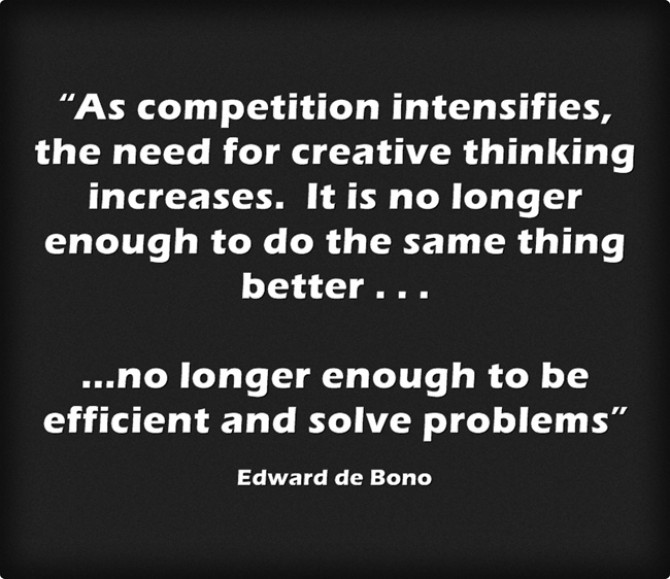HOW TO USE PINTEREST TO BUILD CREATIVITY IN YOUR BUSINESS
It’s official. Using Pinterest enhances your creativity!
At least that’s my interpretation of the latest exciting scientific studies into Creativity :).
Here’s why:
The ‘science bit’ 🙂
BBC’s ‘Horizon’ programme recently showed Scientists at the University of California (amongst others) looking into the origins of the ‘creative spark’, the flash of insight which leads to problem-solving and new ideas.
Researchers gave volunteers games and puzzles and studied their brains using the latest neuro-imaging techniques to capture the moment when the solutions appeared in a ‘flash’.
In a nutshell, they found increased activity in the right side of the brain and reduced activity in the frontal lobe (the part which ‘self-monitors’ so we don’t say something stupid at a cocktail party). When this latter ‘straightjacket’ relaxes our brain is free to make more connections and it is during these periods that insight occurs. This is what’s happening when a jazz musician improvises freely.
Allowing insight
During my decades of experience in creative businesses I have studied many books on the subject of enhancing creativity – including ‘Imagine’ by Jonah Lehrer. So the recent studies seem to me to be a formalisation of theories which have been around for a few years. Putting them all together we can come up with a ‘recipe’ for enhancing creativity using simple everyday actions and principles.
For example, taking a new route to work or making dinner a different way allows our brain to be set free from its fixed routines for a while and come up with novel ways of doing things.
Taking a break from problem solving whilst also doing a mundane, repetitive task (such as mowing the lawn, sorting laundry or walking) allows new brain connections to happen and new ideas to appear when we return to the problem.
Creativity in Business – Act 1
Now more than ever the advancement of business depends on creative innovation, and we can all use the results uncovered by these scientists to increase creativity in our day-to-day business.
Here are some ways to do that.
- When trying to solve a business problem, take a break and have a brisk walk allowing your mind to wander (on the beach if you’re lucky enough to be near one, the ocean expands thinking)
- Paint your office blue (or use blue accessories). Blue is known to double creative output
- Trying to come up with an idea for a new product or service? Think about it in the shower. This is a cliché but it is based on real scientific evidence – it relaxes the frontal lobe of the brain, increases alpha-waves and allows new ideas to surface.
- Meet fellow business owners for a cuppa and talk about your work. The exchange of ideas boosts problem-solving and prompts ideas (the ‘water cooler’ principle).
- Look out of your home office window and take a 10 minute ‘daydream’ break.
- Use Pinterest during your work day to post photos or video pins which are relevant to your business and attractive to other users. The activity of pinning (mundane task) coupled with the effort of making connections between the visual content you find or create – and topics relevant to your business and your ‘audience’ (focussed task) – flexes your creative ‘muscles’. This also dovetails with the way our brain naturally operates.
- Use a Pinboard as a virtual ‘mood board’ and post all types of inspiration for a project or product, the more diverse the better. Look over the board regularly, try to see connections between pins, and wait for new ideas to spring to mind.
- Get inspired by Pinboards from other industries and transfer ideas to your business. Gutenberg used his knowledge of wine presses to invent the mass-printing machine.
- Brainstorm in front of a lightbulb. The clichéd image actually does prompt insights!
- Focus and refine an idea until it works. Milton Glaser created the perfect marketing slogan, but continued enhancing it for months until “I ❤ NY” emerged as the most widely imitated piece of graphic art in the world.
- Find your ‘Ideal Q’ factor. Sociologists have found creativity is multiplied the more often you collaborate with familiar teams of people from varied backgrounds. An example is the creative team putting on a Broadway musical, many of which will have worked together on previous shows and mesh together seamlessly.
- Don’t forget you can now use ‘Secret Boards’ on Pinterest to brainstorm projects with colleagues in private, until you are ready to unveil your ‘masterpiece’ to the public!
Try it and see!
Do you feel more creative? Are ideas flowing more freely?
Look out for my pinnable ‘Creativity Countdown’ checklist in the next blog post, and join us on Pinterest for the “20 Day Creativity Challenge” coming soon on my Pinterest board.
